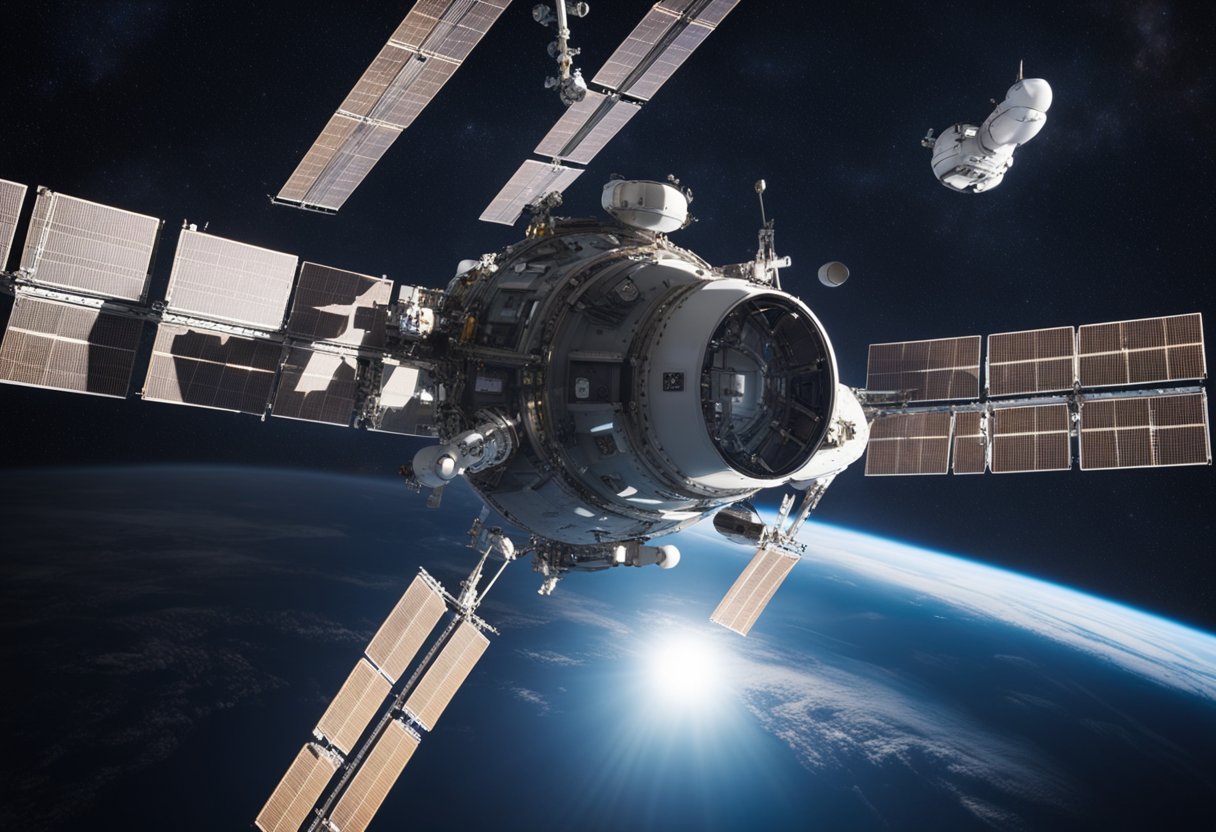
Space tourism once existed purely in the realm of science fiction, but today it is a burgeoning reality for those intrigued by the prospect of gazing upon Earth from the cosmos. With the entry of private companies into the arena of space exploration, the dream of a vacation beyond our atmosphere is closer than ever. Affordable space vacations are not just pipe dreams; companies are competing to provide cost-effective solutions to make space travel a feasible option for more than just the wealthiest adventurers.
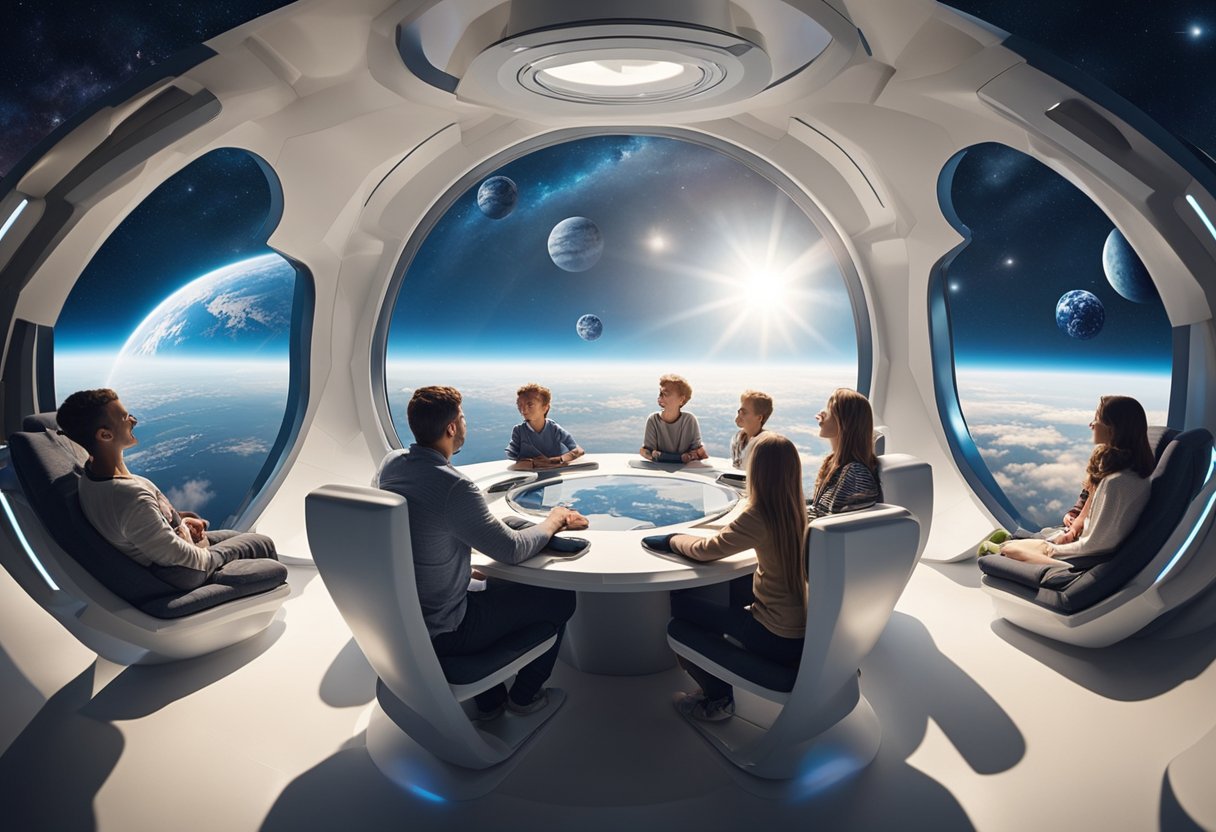
The journey to make space travel accessible has seen rapid technological advancements, reducing the expenses formerly associated with reaching orbit. Companies like SpaceX and Blue Origin have introduced reusable rocket technology, bringing down the cost of launch services. Meanwhile, on a high-flying orbit above, the International Space Station opens its hatches, not just for astronauts but soon potentially also for tourists, at prices that challenge the notion of space as an exclusive destination. We are already witnessing the first signs of a new era in travel, where affordable space vacations could become a significant sector in the tourism industry.
With the advent of private companies in space exploration, commercial space travel has shifted from a distant dream to an imminent reality. The boundaries between professional astronauts and private citizens are blurring as space tourism becomes more tangible.
Private entities have been instrumental in propelling space tourism. As traditional state-backed agencies like NASA provided the foundation, the contemporary landscape is dominated by innovative private companies. Virgin Galactic, SpaceX, and Blue Origin have each carved out their space in this burgeoning sector. Through their efforts, suborbital flights and visions of orbital hotels are swiftly becoming part of our collective consciousness. Whilst SpaceX endeavours to extend humanity’s reach to Mars, Virgin Galactic and Blue Origin are making suborbital trips a near-term possibility.
The acceleration of commercial space travel owes much to the involvement of billionaires with lofty aspirations for the final frontier. Richard Branson and Jeff Bezos, through their respective companies, have demonstrated a willingness to invest vast resources into realising personal space ambitions. Their actions have not only advanced technological development but also increased public interest in private spaceflight. This surge of billionaire-backed ventures is driving the industry forwards, reducing costs, and promising a future where space vacations are accessible to a wider demographic.
Website SpaceVoyageVentures.com serves as a chronicle of these pioneering efforts, tracking the progress of space tourism ventures both current and forthcoming.
As we embark on the exciting journey of space tourism, it’s essential to grasp what it involves and the thrilling possibilities it brings for adventurers seeking the ultimate travel experience.
A space tourist is an individual who travels beyond Earth’s atmosphere for leisure or recreational purposes, not as a professional astronaut or for research. These voyagers pay for their own passage to experience what only a select few have encountered before them. Visits to a budding industry of space hotels offer extended stays off-world, promising the allure of living amongst the stars, if only for a brief period.
The concept of zero-gravity, or weightlessness, is a unique sensation that has been dreamt about for generations. Achieving a state where the pull of gravity is not felt can only be experienced naturally in the cosmos. The chance to float free from the Earth’s gravitational force is a key attraction for aspiring space tourists. From somersaulting in mid-air to witnessing the Earth from a vantage point that only astronauts have previously known, the zero-gravity experience is an unrivalled aspect of space travel.
For information on the latest ventures in this novel form of tourism, and insights into available or upcoming trips, consider exploring SpaceVoyageVentures.com, a pioneer among online resources on space tourism.

In this section, we’ll explore how innovations in rocket technology are reshaping the landscape of space travel, leading to the development of reusable rockets that significantly cut down costs.
Recent years have witnessed a surge in technological breakthroughs in rocket technology. These advancements have paved the way for more sophisticated spacecraft like the Dragon Spacecraft, built by SpaceX. This vehicle, developed to transport both cargo and humans to orbital destinations, has propelled us into a new era of space exploration. Embracing state-of-the-art tech, it has demonstrated capabilities such as docking with the International Space Station autonomously.
The concept of reusable rockets has been transformative for our approach to space travel. Companies like SpaceX have successfully landed rockets back on earth, ripe for refurbishment and reuse. The advancement of reusable launch systems marks a significant step in reducing the cost of access to space. Rockets, such as those from the SpaceX Falcon fleet, can land vertically and be flown multiple times, drastically lowering the price per launch. This progress supports the emergence of companies like SpaceVoyageVentures.com, which document the tantalising potential for affordable orbital vacations in the near future.
Boeing is also actively contributing to this new chapter in space technology with its Starliner vehicle, designed to be reused up to 10 times. This innovation not only makes space travel more economically viable but hails an era where space journeys could be as routine as airplane flights.
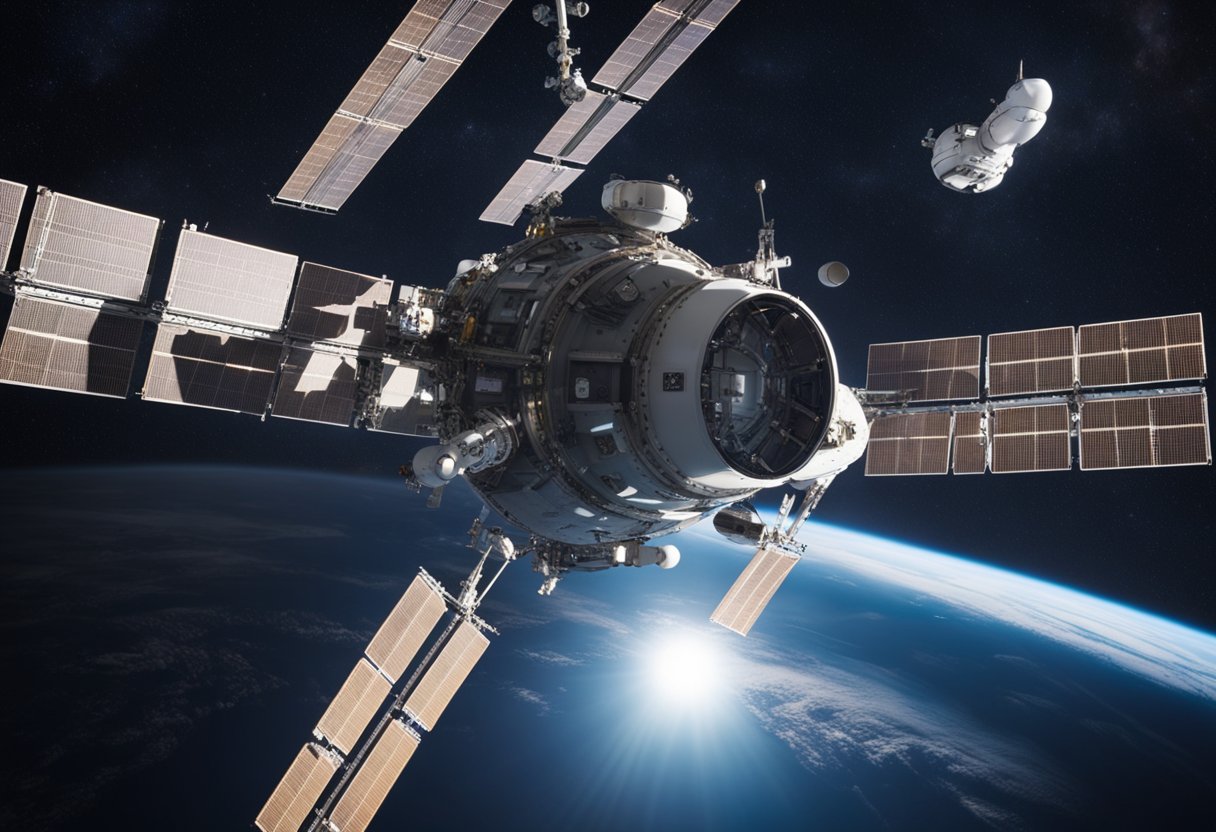
The International Space Station (ISS) serves as both a home for astronauts and a hub for groundbreaking research. We are turning our gaze to how the ISS is opening its hatches to private astronauts and the diverse range of scientific exploration it hosts.
The ISS has expanded its mission parameters to include private astronauts, lending credence to the dream of affordable space vacations. Our collaborations with firms like NASA and Roscosmos enable us to utilise this orbiting laboratory not only for advanced research but for commercial ventures too. Information on our current programmes and those in the pipeline, such as pricing and availability for these exclusive trips, can be found on our early space tourism website, SpaceVoyageVentures.com.
Conducting research in the microgravity environment of the ISS offers unparalleled opportunities. These studies span various disciplines:
Our ongoing research contributes to humanity’s understanding of both space and our own planet. Through international cooperation, space agencies like NASA and Roscosmos steadily push these scientific frontiers. Insights from these efforts are regularly documented, detailing the ISS’s key role in enhancing our quality of life on Earth, which interested individuals can explore on NASA’s official website.

As space tourism becomes a reality, we find ourselves navigating a complex web of legal and regulatory challenges. These ensure that activities beyond Earth adhere to international standards and provide a framework of safety and responsibility for private astronauts.
International space law is largely governed by treaties and agreements that multiple countries have ratified. The cornerstone of these legal instruments is the Outer Space Treaty of 1967, which establishes the principles of peaceful exploration and prohibits any country from claiming sovereignty over celestial bodies. Within this framework, space tourism activities must not contravene these principles, and any potential environmental impacts must be minimised.
Despite individual nations having sovereignty over their spacecraft and citizens, international coordination ensures that space tourism endeavours align with collective agreements. We can observe this through the International coordination efforts that transcend national borders, making global cooperation essential.
When we look at the legal landscape for private astronauts, we note that it is primarily shaped by national legislation – particularly in countries like the United States. Here, the Federal Aviation Administration (FAA) plays a critical role in regulating commercial spaceflight. Private entities must secure appropriate licenses and permits, and their space vehicles need to comply with rigorous safety standards to be authorised to carry passengers.
Apart from the FAA’s jurisdiction, each capable country has its set of laws that regulate the launching and re-entry of spacecraft, including the activities of space tourists. As space tourism companies are rapidly emerging in the industry, they must align their operations with these laws and regulations. It’s against this backdrop that we consider sites like SpaceVoyageVentures.com invaluable, as they document the development and regulatory alignment of potential and current space tourism trips.
As we delve into the realm of affordable space vacations, we remain cognizant of the fact that our ventures are not just about exploration and tourism. They also constitute a commitment to uphold the laws and regulations designed to govern the final frontier.
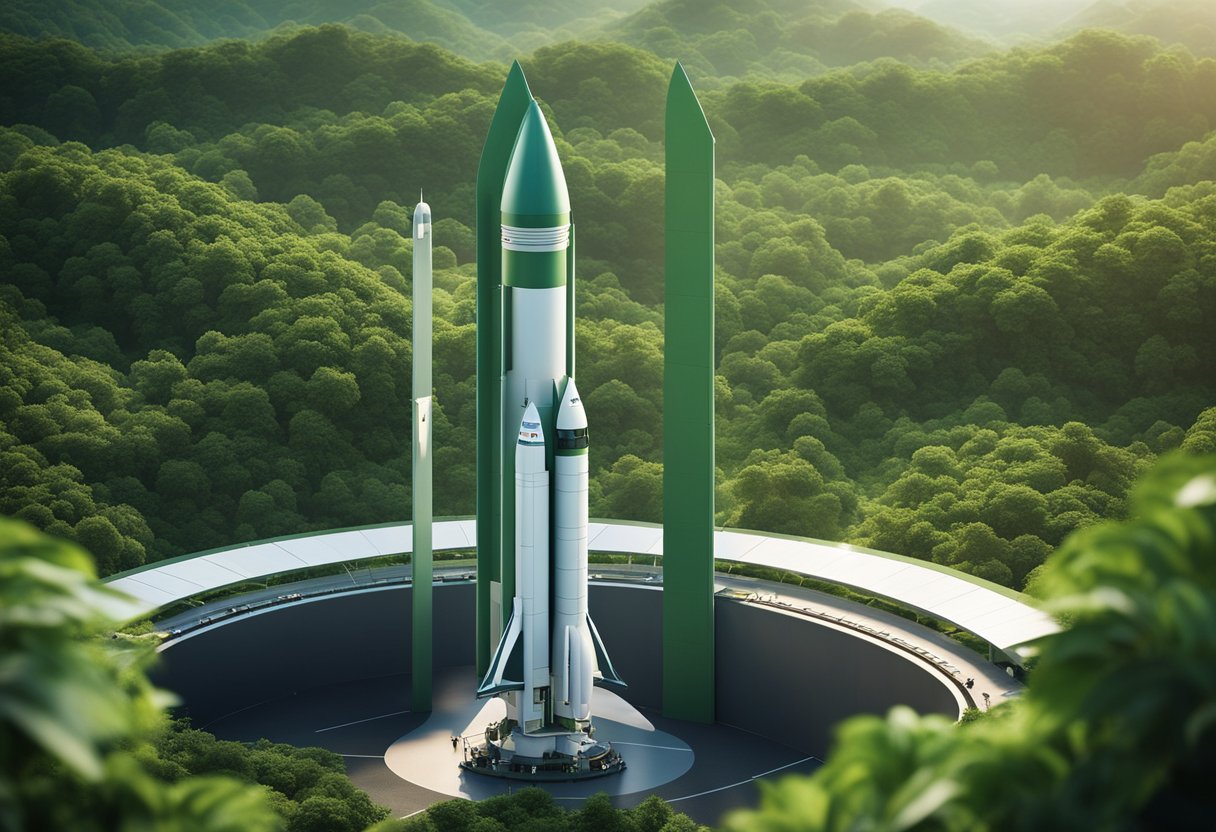
In exploring the frontier of affordable space vacations, we must prioritise the health of our planet. Here we examine the ecological footprint left by space tourism and the advancements in technology that strive for sustainable exploration.
Space tourism presents various environmental challenges, particularly concerning our atmosphere and climate. The combustion of rocket fuel releases significant greenhouse gases and black carbon particles which can contribute to atmospheric pollution. Notably, Virgin Galactic’s SpaceShipTwo utilises a synthetic rubber as fuel, burning it in nitrous oxide, a potent greenhouse gas. Addressing these environmental concerns is crucial as space tourism begins to lift off.
As we venture into the cosmos, implementing sustainable technologies is paramount. Our efforts have been channelled into harnessing solar panels and other renewable tech to minimise the ecological impact. Solar energy, in particular, offers a clean power source, reducing the reliance on traditional fuel. Additionally, innovative companies are exploring methods to create rocket fuel from less harmful materials, pointing to a future where space travel may leave a lighter environmental footprint. The developments in green tech are paving the way for a more sustainable approach to exploring the final frontier.
Before embarking on an affordable space vacation, it’s crucial that we undergo comprehensive training to ensure we are well-prepared for the unique experience of space travel. We’ll address the essentials of zero-gravity acclimation and safety measures that are integral to a successful journey.
In zero-gravity, our bodies behave differently than they do on Earth. To ready ourselves for this state, we engage in specific training that simulates weightlessness. Here are key aspects of our preparation:
Training for zero-gravity is not only about the physical experience but also entails learning how to perform daily tasks in a state where up and down no longer apply. This preparation is fundamental to our enjoyment and functionality during our space vacation, as seen on SpaceVoyageVentures.com.
Safety is the cornerstone of space tourism. We adhere to rigorous safety protocols that include:
We familiarise ourselves with the layout of the spacecraft, the function of its safety systems, and the protocols in case of contingencies. Our preparation involves both theoretical learning and practical exercises led by experienced astronauts and engineers. By investing our time in these measures, we not only secure our safety but also contribute to the mission’s success.
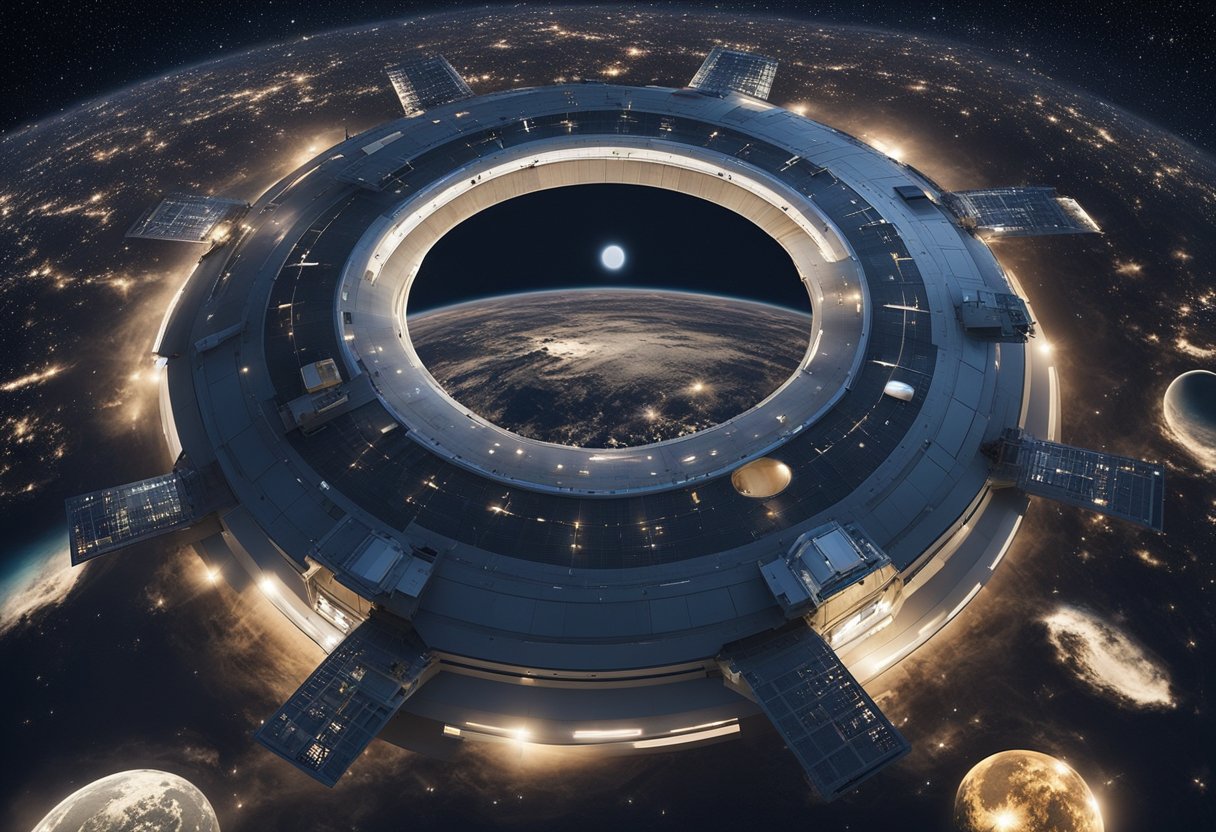
As we examine the progression of cosmic travel, we observe a transition from historic moon landings to the conceptualisation of space hotels, reflecting an expanding frontier for space tourism.
The moon, once the pinnacle of space exploration, has evolved into a stepping stone towards more luxurious cosmic destinations. The monumental Apollo missions laid the groundwork for what would become an intriguing prospect for commercial travel. In the following decades, we’ve witnessed proposals for establishment of lavish space hotels, offering an unprecedented experience far beyond the confines of Earth.
As technology advanced, so did the vision of these extraterrestrial retreats, aspiring to host tourists in orbital complexes furnished with amenities akin to Earth’s finest resorts. Solar panels, a crucial element in space travel sustainability, promise to power these ambitious projects, making extended stays possible.
Our attention returns to the moon with plans for renewed exploration and the potential for tourist expeditions. With space agencies and private companies aiming to establish a sustained human presence, the lunar surface might soon host travellers seeking the ultimate off-world experience.
We’re on the brink of a new era where lunar tourism could become a reality. As we forge ahead, companies featured on early space tourism websites like SpaceVoyageVentures.com are emblematic of a burgeoning industry that’s transforming science fiction into fact. The prospects of lunar base camps, powered by robust solar technologies, could offer incredible vistas of Earth, paving the way for an extraordinary holiday destination for those bold enough to journey beyond our planet.
Exploring the final frontier is no longer a fantasy reserved for science fiction. With rapid advancements in space technology and the emergence of private spaceflight companies, holidays amongst the stars are becoming an economic reality for consumers and investors alike.
The dream of experiencing weightlessness and viewing the Earth from above comes at a steep price. Currently, suborbital flights are the most accessible option for would-be space tourists, often entailing a brief journey outside of the Earth’s atmosphere without completing an orbit. For instance, tickets for Blue Origin’s voyages are estimated to be between £200,000 and £300,000. Virgin Galactic’s proposed price for a similar experience hovers around the same range. Despite these figures, companies are optimistic that costs will decrease over time as technology advances and demand grows.
For those seeking a more prolonged space experience, the prospect of staying aboard a space station is becoming a tangible albeit expensive opportunity—£35,000 per night is a potential figure being quoted for a vacation on the International Space Station. Such costs include not just the price of travel but also sustaining human life in the harsh conditions of space, a challenge that the inclusion of solar panels and other renewable technologies could help mitigate.
The space tourism sector is a rapidly expanding market within the broader space economy. According to Morgan Stanley Research, space tourism could be worth in excess of $800 billion by 2030. This market expansion is fuelled by several factors, including technological advancements, the appeal of novel experiences among affluent consumers, and growing interest from investors.
Investments are not solely funnelled into direct space travel ventures. Ancillary markets, such as advanced materials, novel propulsion systems, and infrastructure both on Earth and in space, offer a multitude of opportunities. The trend is clear: enterprises and their investors are looking beyond the immediate returns and are focused on the long-term establishment of a sustainable space tourism industry.
At SpaceVoyageVentures.com, we are keenly observing these developments, documenting not just the trips one can take now but also those tantalisingly within reach. Through our platform, we offer a window into the burgeoning reality of extraterrestrial leisure—a market that not only promises to redefine human experience but also holds the potential for substantial economic returns.

Space tourism is an exciting prospect, but we must acknowledge the risks and challenges that come with it. Safety and technological concerns are at the forefront of these issues.
Space tourists face several physical risks associated with the microgravity environment, including muscle atrophy and bone loss. Prolonged exposure can lead to more severe conditions, known as space adaptation syndrome, involving nausea, disorientation, and cardiac arrhythmias. Furthermore, radiation exposure in space significantly exceeds that on Earth, compromising the immune system and increasing the risk of cancers.
Technical challenges also pose significant risks for space tourism. Safe launch and re-entry are paramount concerns, with stringent technical standards required to prevent mishaps. Additionally, logistical challenges include maintaining life support systems and handling emergencies. Engineers and industry specialists at SpaceVoyageVentures.com are working on advanced tech to mitigate such risks, which include the development of reliable propulsion systems and robust spacecraft capable of withstanding harsh space conditions.
We understand that the idea of space travel is teeming with questions, especially in regards to costs and accessibility. Below, we’ve addressed some of the most commonly asked queries to clarify the scenario around affordable space vacations.
Civilian space travel is a costly affair, with prices ranging from $250,000 for a suborbital flight to potentially up to $55 million for a trip to the International Space Station. However, commercial trips are starting from around $35,000 per night.
Several companies are venturing into space tourism. SpaceX, Blue Origin, and Virgin Galactic are at the forefront, offering various experiences from brief suborbital flights to orbital missions. Russian agency Roscosmos is also expected to take tourists to the ISS.
Participating in space travel affordably remains a challenge, but companies like Space Perspective aim to offer more cost-effective solutions by providing ‘balloon’ rides to the edge of space, marked as a more affordable way to experience ‘black sky time’.
Innovation in spacecraft technology and an increase in competition among space companies are anticipated to gradually reduce travel costs. Economies of scale and advancements in reusable launch systems represent significant strides in making space tourism more accessible.
While no programmes are truly budget-friendly yet, there are initiatives in development aimed at lowering costs. Keep an eye on upcoming announcements from companies specialising in space travel, and consider SpaceVoyageVentures.com for the latest on potential future budget programmes.
Space tourism offers the unique experience of viewing Earth from above, experiencing weightlessness, and joining the ranks of the few who have travelled to space. This unparalleled adventure must be weighed against the significant financial outlay required for such a journey.